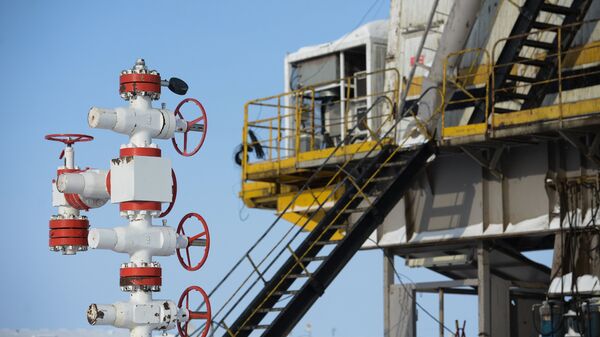According to a report by the US Energy Information Administration (EIA), US oil inventories declined less than previously forecast in the second week of July, despite the traditionally busy driving season. Another indication of the demand-side weakness is the increase in distillate stockpiles, which have gained their most since January, while gasoline inventories sharply increased amid higher prices at filling stations.
"A surprising build in gasoline in the peak of U.S. driving season and a very large build in heating oil will set the tone for lower prices as we go forward," Tariq Zahir of New York-based Tyche Capital Advisors said. "The products markets will continue to put weakness in the energy complex."
The oil market has already been dominated by bearish sentiment after the International Energy Agency (IEA) reported a rise in global oil inventories, as indicated by the increase in floating storages to their seven-year highest.
Iranian #oil production climbs to fresh 5-year high of 3.7m b/d post-nuclear sanctions — @IEA data #OOTT #OPEC #Iran pic.twitter.com/fuv10GtQ0S
— Javier Blas (@JavierBlas2) 13 July 2016
The IEA said that happened because the Middle-Eastern oil exporters produced over 31 mln barrels per day (bpd) in June — the third consecutive month of a massive buildup in oil shipments from the region, driven by Saudi Arabia's record-high output. US oil production, meanwhile, declined by 140,000 bpd to 12.45 mln bpd. The IEA noted that despite a global supply/demand balance being within reach, the recent significant increase in crude inventories is leveraging downside pressure on the market.
"When US shale production was moving upwards very fast it became fashionable to talk of lower reliance on traditional suppliers," the Paris-based IEA said. The rapid gains in Middle Eastern oil output are "an eloquent reminder that even when US shale production does resume its growth, older producers will remain essential for oil markets."
Low-cost producers in the Middle East remain central to oil markets https://t.co/t3n9ni9UZR pic.twitter.com/Ti5aNYDxeD
— IEA (@IEA) 8 July 2016
US oil production is shrinking due to noticeable disinvestment from the energy sector, stemming from the lower profitability of the entire industry. While US oil production peaked in June 2015 at 15 mln bpd, the OPEC Middle East crude output has risen significantly since then, surpassing the US production in an attempt to support the depleting foreign currency reserves held by the Gulf powers.
"This will start biting… global oil companies invested $500 billion less in the last 12 months," non-affiliated oil expert Cornelia Meyer said.
Yet, as of now, Brent crude benchmark has dropped 4.6 percent, settling at $46.26/bbl, while in North America, WTI crude declined 4.4 percent to $44.75/bbl.
US refiners' profits margins, known as crack spreads, fell for both diesel and gasoline. For the latter, the crack spread plunged roughly 34 percent over the course of a fortnight, from $28/bbl to below $13/bbl.
"[Stocks] are at such elevated levels, especially for products for which demand growth is slackening, that they remain a major dampener on oil prices," the IEA reported.
The situation stems from the dominating trend of the recent several months: US refiners, attracted by low crude prices, have accumulated more oil than they can process and effectively put on the market. At this point, the effects of that buildup are hitting back at crude prices, which, however, might curb and reverse petrol prices, encouraging greater fuel consumption for driving and heating. However, where the new balance point for the energy market is, is hard to determine due to the multiple variables involved. Nonetheless, longer-term tendencies suggest the prices would deviate insignificantly from their current levels unless more significant market factors are revealed.



